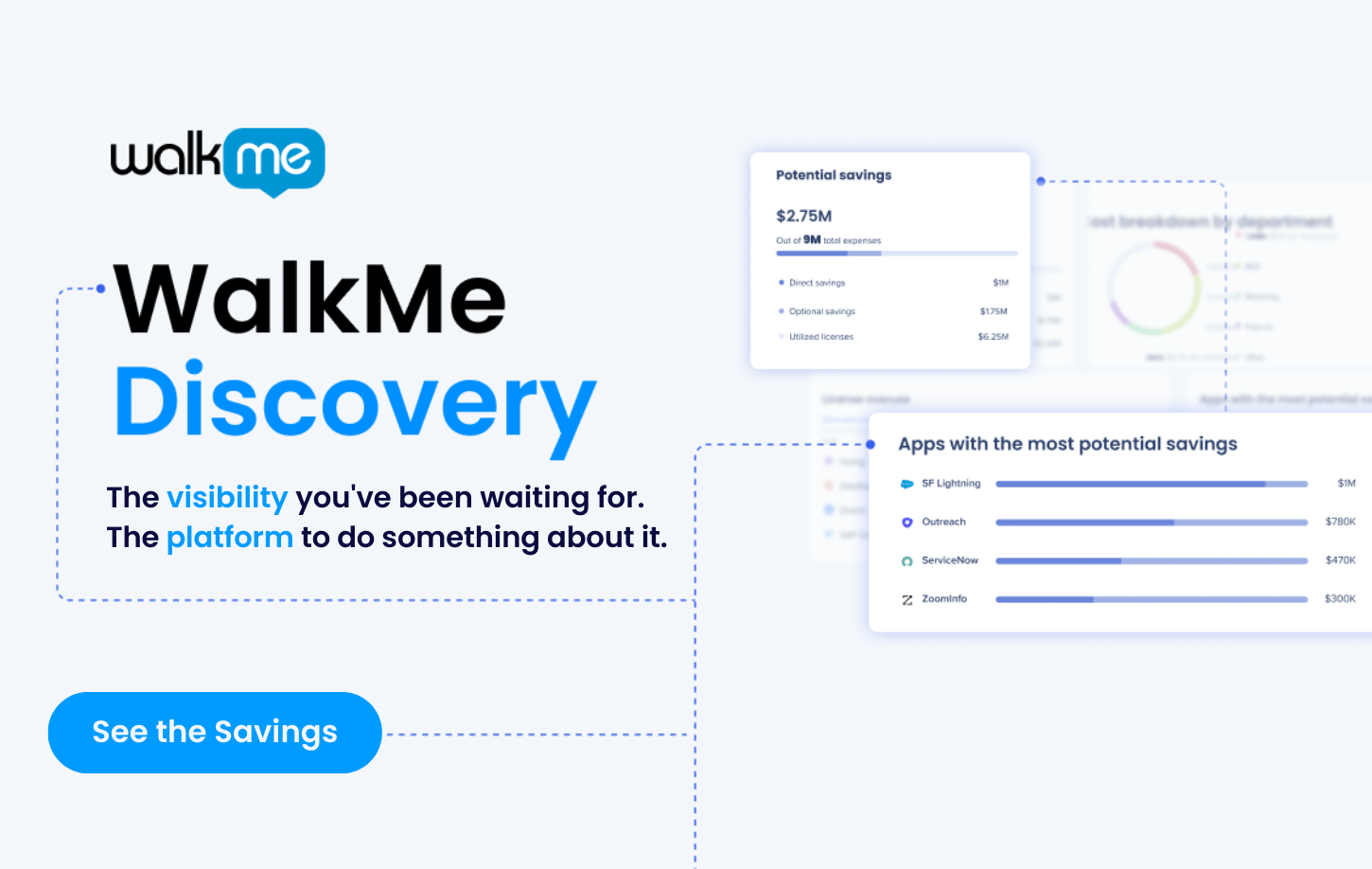Do you think in the short or long term?
For many companies, it’s the former, which often results in a loss of revenue over time. Long-term thinking, conversely, means planning for the future and choosing to make strategic IT cost savings for a more sustainable business.
IT costs is one place where savings can be made quickly by streamlining processes, providing online help and avoiding work reproduction, saving your employees time and allowing them to concentrate on the job at hand. Sometimes finding the right software can impact your bottom line almost instantly.

It is essential to prioritize your IT cost savings, which is why we have provided this list of topics to ensure your IT cost savings projects reduce outgoings and increase revenue:
- Why are IT cost savings vital in 2023?
- What are the two types of business costs?
- Strategies to make IT cost savings
- 3 IT cost-saving project examples
Why are IT cost savings vital in 2023?
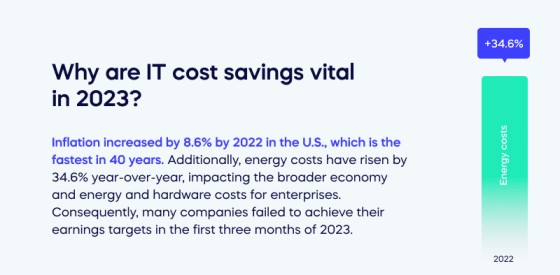
IT cost savings are becoming more essential due to the increasing costs of technologies. The many IT products available mean selecting the best ones for your business is becoming increasingly complex.
Add to this that, in the middle of 2022, the global business outlook appeared uncertain due to rising inflation and energy costs, making these challenges of cost optimization a far more critical factor in remaining profitable.
Inflation increased by 8.6% by 2022 in the U.S., which is the fastest in 40 years. Additionally, energy costs have risen by 34.6% year-over-year, impacting the broader economy and energy and hardware costs for enterprises. Consequently, many companies failed to achieve their earnings targets in the first three months of 2023.
Finding ways to make IT cost savings allows businesses to remain competitive while maintaining their digital resilience.
What are the two types of business costs?
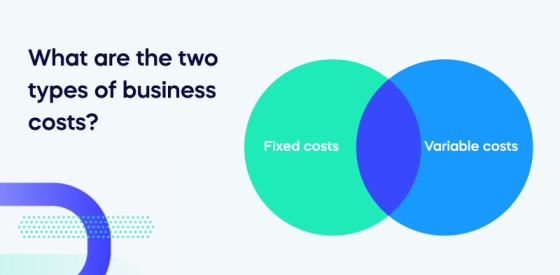
In business, costs can be classified into fixed and variable. Although they affect the business differently, both prices are crucial for profitability.
Fixed costs
Fixed costs are expenses that don’t change with the amount of things you produce or sell. They’re usually based on time instead. Fixed costs include rent, salaries, utilities, insurance, and loan payments.
Adding fixed costs to your small business can be risky because they must be paid regardless of how much you sell. This includes taxes such as business licenses, overhead, or fixed costs.
Variable costs
Variable costs are expenses that fluctuate depending on the volume of production. Some variable costs include raw materials, production supplies, labor paid per unit, commissions, delivery costs, packaging materials, and credit card fees.
Some accounting statements refer to these expenses as the “Cost of Goods Sold.”
Considering the different types of costs when calculating your IT cost savings is essential, as they help you create a comprehensive IT cost savings strategy.
10 strategies to make IT cost savings
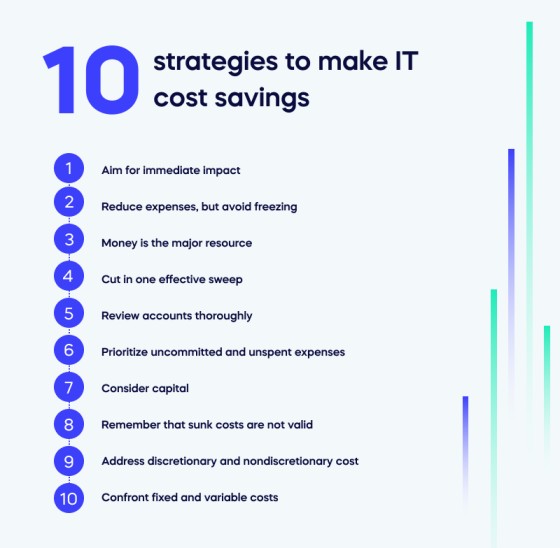
Follow these 10 strategies to ensure you optimize your IT cost savings efforts and see a high ROI.
1: Aim for immediate impact
Focus on cutting costs for items with a short-term impact as one of your main cost reduction strategies, such as monthly or quarterly expenses that are paid on a pay-as-you-go basis instead of yearly costs.
2: Reduce expenses, but avoid freezing
Ensure that you focus on expenses that can be reduced or removed to save costs. Avoid freezing costs temporarily because they may come back later, reducing the impact of your cost optimization efforts.
3: Money is the major resource
Focus on selecting items directly affecting cash flow in the profit and loss statement rather than noncash items such as depreciation or amortization.
For instance, cost-cutting in cloud services will result in actual cash savings, compared to decreasing on-premises software licenses or owned assets, like hardware. Additionally, you can generate actual cash savings by selling and leasing back assets.
4: Cut in one effective sweep
Sometimes organizations don’t make substantial cuts initially, so they have to revisit cost-cutting measures later. This leads to a harmful cycle of doubt, exertion, and decreased productivity. For instance, recurrent staff cuts can be particularly hazardous.
5: Review accounts thoroughly
Collaborate with your finance partner to understand the detailed expenses, expense accounts, and essential balance sheet accounts comprising expense accruals and prepayments.
Utilize this information to pinpoint cash reductions that can create an immediate impact.
6: Prioritize uncommitted and unspent expenses
Assess your contracts for renegotiation and termination clauses, as the initial impact will be on unspent or uncommitted payments unless refunds can be given or payments can be collected.
7: Consider capital
While operating expenditures (opex) are usually more adjustable, cutting down on capital expenditures (capex) is possible.
Since roughly a quarter of the average IT budget is usually allocated to capital expenses, consider all IT expenses to make quick reductions.
8: Remember that sunk costs are not valid
When trying to save money, people often say that “sunk costs are irrelevant, ” meaning that money spent in the past should not influence future spending choices.
This may be true for quickly reducing costs, but it’s essential to consider whether the savings outweigh the benefits of continuing with the current approach.
9: Address discretionary and nondiscretionary cost
Cutting expenses for discretionary items, like new projects or extra services, maybe the easier option. But it’s also possible to reduce necessary costs like IT infrastructure and operations by decreasing usage or service levels.
10: Confront fixed and variable costs
Fixed costs are expenses that stay the same even if there’s more or less activity or volume, like rent for the office, subscriptions, and payroll. To save money on fixed costs, you should try to get rid of them.
On the other hand, variable costs change based on how much activity or volume there is, like how much you use the phone or hire contractors. To save money on variable costs, you should try to reduce and eliminate them.
3 IT cost-saving project examples
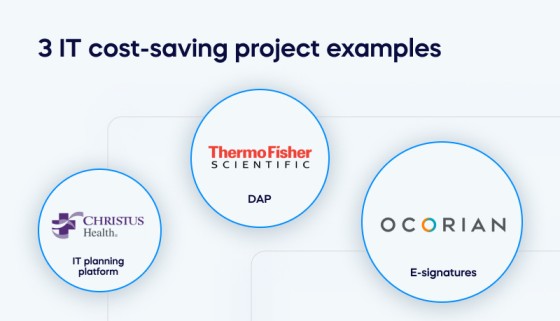
The practice of how companies utilize technologies for IT cost savings can offer inspiration and motivation as they reinforce your understanding of how you can plan and implement your IT cost-saving efforts.
Ocorian: E-signatures
Financial company Ocorian used a new e-signature system to reduce costs associated with paper signatures by enhancing their multi-touch signing processes to bring numerous benefits to the organization and its clients via IT cost savings.
Doing so allowed Ocorian to offer staff and clients the option to sign agreements remotely, ensuring business continuity while adhering to government requirements for remote work.
Overall, Ocorian’s digital transformation through technologies like e-signatures enabled business continuity during the pandemic and improved client service, increased efficiency, and yielded IT cost savings.
These digital tools will likely continue benefiting Ocorian several years into the future by providing a more agile and efficient way of conducting business via reduced IT department costs.
Thermo Fisher: DAP
Thermo Fisher Scientific’s decision to implement WalkMe as part of its digital adoption and change management efforts demonstrates its commitment to efficient onboarding, training, and employee engagement as part of its IT cost reduction initiatives.
Using WalkMe for their DAP tool and change management guidance, Thermo Fisher employees can now access customized in-app advice and real-time instruction for platforms like Salesforce and Workday.
These changes mean employees can receive on-the-spot assistance and support, increasing productivity and reducing the need for external support channels.
The central IT cost-saving advantages Thermo Fisher experienced were as follows:
- 20% reduction in Salesforce®-related support tickets.
- 70% engagement during Workday® onboarding.
- 83% of users rely on WalkMe for ongoing training and support.
- Eliminated monthly live training sessions.
- 2000% improvement in data accuracy.

This use case shows how streamlining training can save significant resources as digital adoption rates are reduced, and changes stick.
Christus Health: IT planning platform
CHRISTUS Health’s IT Finance team recognized the need to streamline their planning process.
In changing this process, they aimed to achieve the following:
- Align budgets with project and operational demands.
- Improve business unit engagement.
- Address shadow IT related to SaaS applications as part of their IT cost savings efforts.
CHRISTUS Health decided to leverage a 12-week window between budget cycles and implement a business and resource management platform to achieve this.
Their partner worked swiftly to configure their new platform and provide training to managers, allowing them to adopt the new system enabling significant cost reductions quickly.
By doing so, they also eliminated the inherent inefficiencies in data collection and gained better visibility into IT spending.
CHRISTUS Health’s IT Finance team could more effectively align budgets with project and operational demands by streamlining the planning process and gaining better visibility into IT spending.
Doing so allowed them to allocate resources more efficiently, prioritize strategic initiatives, and reduce the risk of SaaS-related shadow IT.
Overall, the implementation by their CHRISTUS Health’s IT Finance team resulted in improved budgeting processes, enhanced engagement from business units, and a better understanding of IT spending as they adopted the IT planning platform as part of their cost reduction strategy.
This new business and resource planning approach leads to more informed decision-making, resource optimization, and higher IT cost savings.
Invest in IT cost savings today
Investing in IT cost savings is vital for any business because making an upfront investment now allows organizations to save on costs in the long run, significantly improving their overall operations and profits.
So don’t wait – invest in IT cost savings today to secure your company’s sustainability tomorrow.
